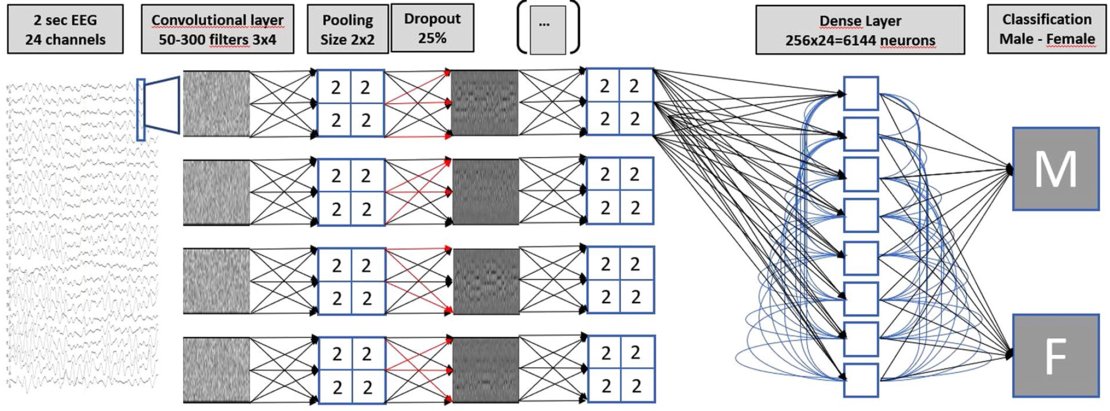The electric brain signals, measured by using EEG, of males and females show differences. The difference can’t be detected by visual inspection, not even by the trained eye of a neurologist. A ‘deep learning’ computer is able to find it. Researchers of the University of Twente, the University of Zürich and Brainclinics research institute in Nijmegen, publish these results in Scientific Reports of 15 February.
Male and female brains are different, functionally and anatomically. But that the EEG (electro-encephalography) signals, measured using electrodes placed on the skull, show different signals as well, was not demonstrated yet. For the interpretation of EEG signals, advanced pattern recognition techniques have been developed the last decades. Still, in many cases, the trained eye of the neurologist gives better results. Even these trained eyes are not able to recognize a difference between male and female brain rhythms. For this, artificial intelligence, so-called ‘deep learning’, is needed.
Training
The researchers had a large set of over 1300 EEG patterns, from several laboratories, at their disposal. This set has been entered into a learning computer, a so-called ‘convolutional neural network’. This is an artificial neural net existing of several layers and determining over nine million parameters. The network was first trained using 1000 EEG’s of just two minutes, with a known outcome: male or female. This was not a training based on entering specific characteristics, as these were not known beforehand. After training, the computer was fed with an independent set of EEGs. In over 80 percent, the system gives the right answer. This is well above the significance threshold.

The multilayer neural net setup, used for classifying EEG readings
BETA ACTIVITY
The next step: extract the specific features that make the difference, from the neural net. The main difference is in the ‘beta activity’, a frequency range between 20 and 25 Hz. These rhythms have to do with cognition and with tasks that are emotionally positive or negative. It is known from previous research that females are better capable of recognizing emotion: this could indicate a difference in beta activity. Within the context of this research project, this has not been elaborated further. The outcomes don’t give an answer to transgender issues either.
PERSONALIZED TREATMENT
It seems a complicated way of assessing sex, using EEG and strong computing power. An interesting question, however, can be: do females and males respond to neurological or psychiatric disorders in different ways. And thus: is it, based on this knowledge, possible to better tailor the treatment? Apart from that, this research shows that there is a lot more information inside an EEG than meets the eye. Previous research using the combination of EEGs and deep learning, was on sleep analysis, responds to music or early detection of brain diseases. There is enough reason for further exploring this potential, as it could lead to better insights and personalized treatment.
The research has been done by Michel van Putten, professor of clinical neurophysiology at the University of Twente and neurologist at the Medisch Spectrum Twente hospital in Enschede. He collaborated with Sebastian Olbrich of the Psychiatric clinic of the University of Zürich and with Martijn Arns of the Brainclinics research institute in Nijmegen.
Their paper 'Predicting sex from brain rhythms with deep learning’, is published in ‘Scientific Reports’ of 15 february. This is a Nature publication.





